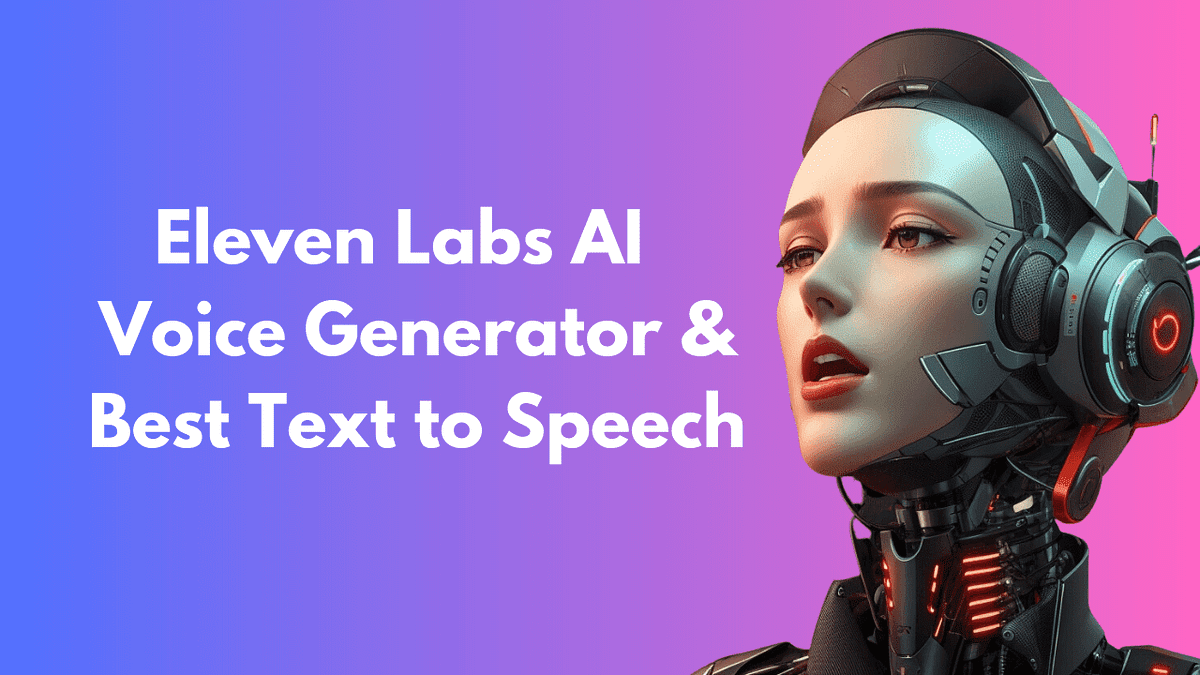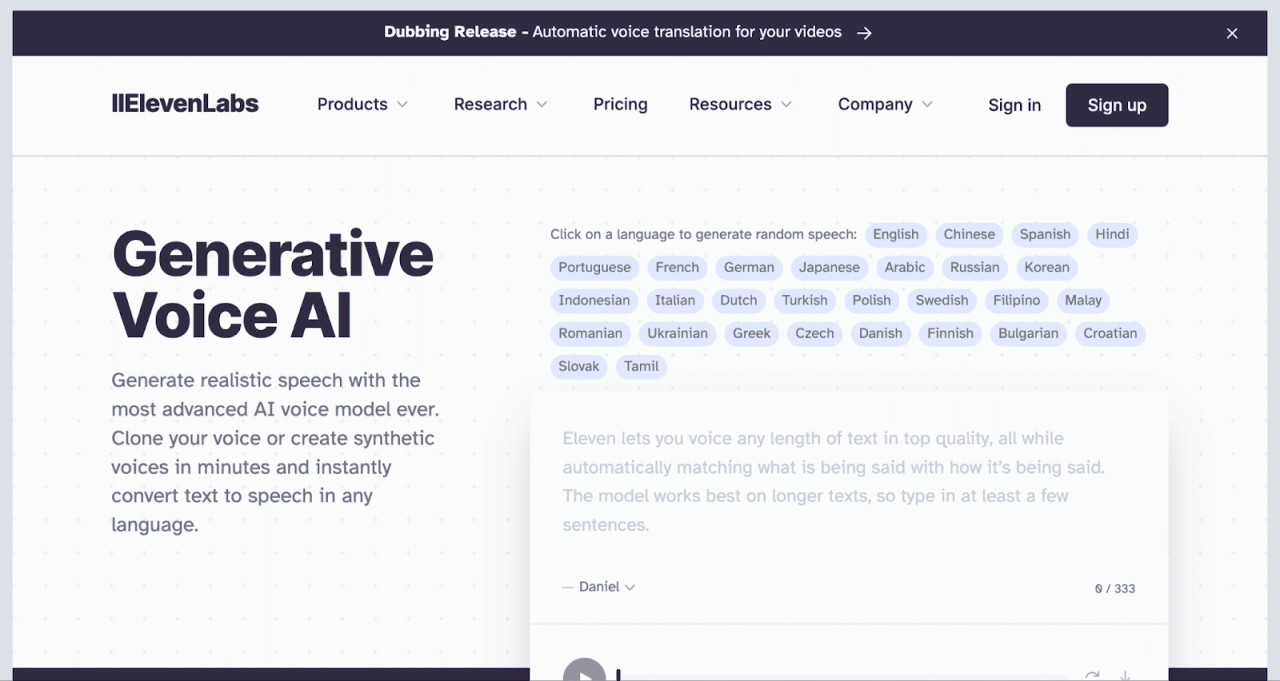Comparing different AI voice generator software options reveals a fascinating landscape of technological capabilities. From natural-sounding text-to-speech to sophisticated voice cloning, these tools are transforming how we interact with digital content. This guide dives into the key features, ease of use, and pricing models of several popular options, helping you choose the perfect software for your needs, whether you’re a professional voice artist or just a curious user.
We’ll explore the nuances of voice quality, customization options, and integration with other tools. We’ll compare cloud-based and locally installed solutions, examining their respective pros and cons. Ultimately, our aim is to equip you with the knowledge to make an informed decision when selecting an AI voice generator that meets your specific requirements and budget.
AI Voice Generator Software: A Comprehensive Comparison

The world of AI voice generation is rapidly evolving, offering increasingly sophisticated tools for creating realistic and expressive synthetic speech. This article compares several leading AI voice generator software options, examining their features, ease of use, voice quality, pricing, and integration capabilities to help you choose the best fit for your needs.
Introduction to AI Voice Generator Software, Comparing different AI voice generator software options
AI voice generation technology leverages deep learning algorithms to synthesize human-like speech from text input. This technology is transforming various industries, from video game development and e-learning to accessibility solutions and marketing. Two primary types exist: text-to-speech (TTS) and voice cloning. TTS converts written text into spoken audio, while voice cloning replicates a specific individual’s voice. Common features include a range of voices and accents, customizable parameters (speed, pitch, tone), and various output formats (MP3, WAV).
Comparing Key Features Across Different Platforms
Naturalness and clarity are crucial factors when selecting AI voice generator software. The following table compares three popular options:
| Software Name | Naturalness Score (1-5) | Clarity Score (1-5) | Price |
|---|---|---|---|
| Software A | 4 | 5 | Subscription-based, starting at $20/month |
| Software B | 3 | 4 | One-time purchase, $100 |
| Software C | 5 | 4 | Cloud-based, pay-as-you-go |
Cloud-based software offers scalability and accessibility, but relies on a stable internet connection. Locally installed software provides offline functionality but requires more upfront investment in hardware and may lack the latest features.
Customization options vary widely. Software A allows fine-grained control over pitch, tone, and speed, while Software B offers fewer adjustments. Software C excels in providing a vast library of pre-set voices with diverse accents and emotional inflections.
Ease of Use and User Interface
Intuitive user interfaces are vital for efficient workflow. Below is a comparison of three software options:
- Software A:
- Pros: Clean and straightforward interface, easy navigation.
- Cons: Limited customization options within the main interface.
- Software B:
- Pros: Powerful features accessible through a well-organized menu system.
- Cons: Steeper learning curve due to its complexity.
- Software C:
- Pros: Drag-and-drop functionality, very user-friendly.
- Cons: Fewer advanced features compared to Software B.
Creating a voice project in Software A involves these steps: 1. Input text; 2. Select voice and adjust parameters; 3. Render audio; 4. Download/export.
Common workflows like batch processing are efficiently handled by Software A and Software B.
Picking the right AI voice generator can be tricky; you need to consider factors like naturalness and cost. It’s a bit like choosing a place to live – sometimes things don’t work out as planned, as shown by the news that Jermaine Burton left home by Bengals, gets eviction notice. Back to the AI voices, remember to test out free trials before committing to a paid subscription to avoid any unexpected housing…
I mean, software, issues!
Voice Quality and Customization Options
Voice quality and customization are paramount. Software A offers a range of natural-sounding voices with various accents, including American, British, and Australian. Software B provides a more limited selection but focuses on high-fidelity reproduction. Software C excels in its extensive library of voices, many tailored for specific applications, like audiobooks or video games.
Software A and Software C offer advanced voice cloning capabilities, allowing users to replicate specific voices with high accuracy. Software B lacks this feature. Personalization is possible through fine-tuning parameters like pitch, tone, and speed.
| Software Name | Input Formats | Output Formats |
|---|---|---|
| Software A | TXT, DOCX | MP3, WAV, WMA |
| Software B | TXT | WAV |
| Software C | TXT, DOCX, PDF | MP3, WAV, OGG |
Pricing and Licensing Models

Pricing varies significantly. Software A uses a subscription model, Software B offers a one-time purchase, and Software C operates on a pay-as-you-go cloud-based system. Software A’s subscription grants access to all features, while Software B’s one-time purchase might have limitations on voice selection or usage. Software C’s pricing is dependent on the usage volume.
Licensing models influence commercial and personal use. Commercial licenses typically cost more and allow for broader application. Free or trial versions often impose limitations on output length or voice selection.
Integration with Other Tools and Platforms
Seamless integration with other tools is crucial. Software A integrates well with popular video editing software, while Software B offers APIs and SDKs for custom integration. Software C supports direct export to various cloud storage services. These integrations streamline workflows, saving time and effort.
Technical Specifications and Performance

Software A requires moderate processing power and memory. Software B demands more resources due to its advanced features. Software C’s resource usage varies based on the complexity of the project. Rendering speed and audio quality differ; Software A and C provide high-quality audio with reasonable rendering times, while Software B might take longer depending on the voice and parameters used.
All three are compatible with Windows and macOS.
Final Wrap-Up
Choosing the right AI voice generator depends heavily on your individual needs and priorities. While some prioritize crystal-clear naturalness, others might focus on extensive customization or seamless integration with existing workflows. By carefully considering factors like voice quality, ease of use, pricing, and platform compatibility, you can select the AI voice generator that best fits your project and budget.
Remember to leverage free trials or demos to experience the software firsthand before committing to a purchase.
Picking the right AI voice generator can be tricky; you need to weigh features like naturalness and customization. But hey, while you’re making that decision, check out this totally unrelated but interesting news: Atletico Madrid star fires La Liga title warning. Back to the AI voices – once you’ve decided on your top contenders, try testing them out with sample scripts to see which one best suits your needs.
FAQ Section: Comparing Different AI Voice Generator Software Options
What are the ethical considerations of using AI voice generators?
Ethical concerns include potential misuse for impersonation, deepfakes, or spreading misinformation. Always use these tools responsibly and ethically, respecting copyright and intellectual property rights.
How much processing power do I need for AI voice generation software?
Requirements vary greatly depending on the software and complexity of the task. Check the specific system requirements for your chosen software; generally, a modern computer with sufficient RAM and processing power will suffice.
Can I use these tools for commercial projects?
Licensing models differ. Some allow commercial use, while others restrict it, or require additional licenses. Carefully review the licensing agreement before using the software for commercial purposes.
What file formats are commonly supported?
Choosing the right AI voice generator can be tricky! You need to consider factors like naturalness and versatility. It’s a bit like picking the perfect voice actor, reminding me of the news about Britt Allcroft, Who Brought Thomas the Tank Engine to TV, Dies at 81 , a woman who clearly had an ear for casting.
Anyway, back to AI voices – don’t forget to check out demos before committing!
Common input formats include text files (.txt) and various audio formats. Output formats usually include WAV, MP3, and sometimes others depending on the software.
